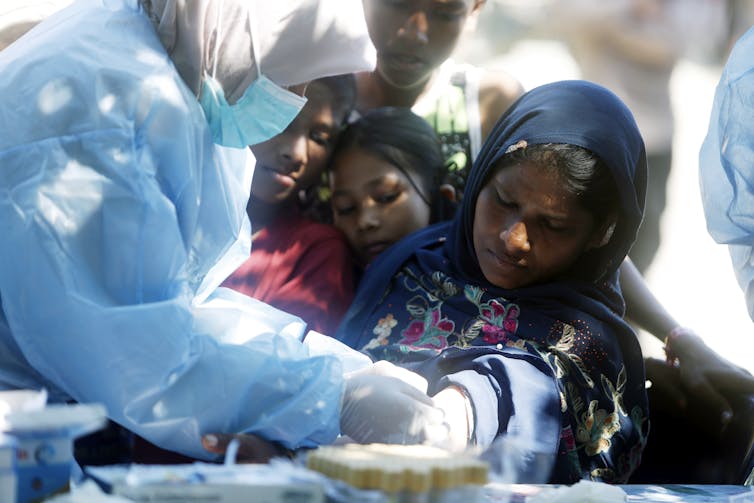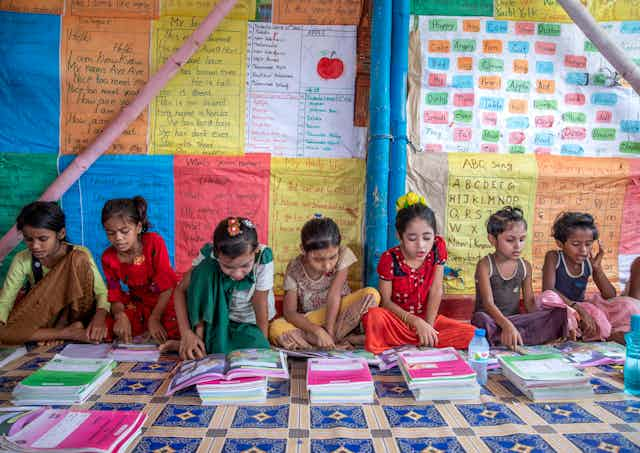It has been over a decade since Australia revived its offshore processing regime for asylum seekers, yet revelations of the policy’s human and financial failures keep coming.
Last weekend, the Nine newspapers reported that the Department of Home Affairs allegedly oversaw the payments of millions of taxpayer dollars to politicians in the Pacific through a chain of suspect contracts.
The Guardian also revealed that the Morrison government had signed a “confidential bilateral agreement” with Papua New Guinea, which promised an undisclosed amount of money in return for welfare and support services for fewer than 80 refugees who remained trapped there.
In the wake of these reports, the Greens have reiterated their call for a royal commission into offshore processing, supported by independent MP Zali Steggall.
These latest reports add to the large amount of research laying bare the human toll of offshore processing.
Offshore processing has had far-reaching consequences beyond our region as well. In the United Kingdom, a similar policy is unfolding, modelled on Australia’s asylum practices. Prime Minister Rishi Sunak’s government has just passed legislation that provides new powers to deport those who seek protection across the Channel.
As the number of people in need of protection grows every year, it is imperative that unlawful and unsustainable efforts to push the problem elsewhere be reversed. Bringing Australia’s offshore processing policy to an end is an important first step.
But Australia must also look ahead to the challenges and opportunities that forced migration will create in the coming decade.
Regional cooperation on asylum
By the end of 2022, there were around 14 million displaced and/or stateless people in the Asia-Pacific region. This included seven million refugees, five million internally displaced people and 2.5 million stateless people.
Violence, conflict and persecution in Afghanistan and Myanmar have produced the largest number of displaced people. Of particular concern are the millions of Rohingya living in extremely precarious conditions in Bangladesh.
Australian policy seems premised on the idea that without strong border controls, all these people would set sail for our shores. The reality, though, is vastly different.
Indeed, since 1975, 90% of refugees displaced in the Asia-Pacific region have stayed as close to home as possible.
However, many lack basic rights to work, health care and education, and are at risk of destitution, detention or exploitation. This means that, without a concerted effort to improve protection for refugees in the region, we will likely see more people in search of their own solutions.
The challenges of displacement are global in nature, and its multi-layered causes mean there are no simple solutions. But we have a better chance of managing displacement with clear-eyed, collaborative and holistic responses, rather than unilateral policies aimed at deterrence and deflection.
Read more: Rwanda plan is in legal limbo, but history shows such migration deals are unlikely to disappear
What should Australia do?
First, we need to move from a responsibility-shifting to a responsibility-sharing approach.
In recent years, our government has asked countries in the region for help in stopping people from trying to reach Australia. But our credibility and moral authority to promote constructive responses to the problem have been fundamentally undermined by policies such as offshore processing and turning back boats.
Above all, we need to listen, not lecture; to collaborate, not cajole.
By listening to other governments, as well as civil society and refugee-led organisations in the region, we will gain a better understanding of their perspectives and needs.
We need to take a “whole-of-society approach”, engaging a diverse set of stakeholders to meet the needs of asylum seekers collaboratively. The UN High Commissioner for Refugees has recently emphasised that countries must also take a “whole-of-route approach”, ensuring protection at every stage of an asylum seeker’s journey.
In the short term, Australia should work with governments in the region to help provide refugees and other displaced people with basic rights and protections. By improving conditions in these countries, we could reduce the need for onward travel to Australia.

There is considerable goodwill right now, with Indonesia, Malaysia, the Philippines and Thailand all signalling a desire to improve their legal frameworks in this area. For instance, Thailand is developing a new “national screening mechanism” to identify refugees, while the Philippines recently revised its systems for determining refugee and statelessness status and has pending legislation on a number of issues.
In return for governments in Southeast Asia adopting reforms, Australia should significantly increase the number of people it resettles from these countries and create other “complementary pathways” to protection. We should also develop more strategic responses in acute crises, just as we did for people fleeing Ukraine last year.
This would be a win–win. More people would be afforded protection in Australia through orderly programs, and those remaining in the region would have basic rights they currently lack.
We also need to engage in diplomatic efforts to encourage other countries in the region, such as New Zealand, Japan and South Korea, to increase their resettlement quotas.
And Australia should provide better resourcing to UNHCR, as well as to local networks and civil society initiatives, such as the Asia Pacific Refugee Rights Network and the Asia Pacific Network of Refugees.
This is not only the right thing to do, but would also be more effective and efficient than current approaches. It is in our national interest not to ignore or compound the consequences of unresolved displacement in our region.
Achieving better protection outcomes
Over the longer term, we should promote respect for human rights and the rule of law, increase our contributions to aid and development in the region, and work to reduce conflict and the negative effects of climate change.
These efforts could help ease the conditions that force people to leave their homes in search of safety. This could also improve conditions for the safe, dignified and sustainable return of those not in need of protection.
Finally, success should not only be measured by whether a state has ratified a particular refugee treaty or adopted national asylum legislation. Protection outcomes for real people are what matter. In other words, are the needs of displaced people and their host communities being met?
This is why we need to develop a more collaborative approach across the Asia-Pacific to ensure that displaced people can move on with their lives in safety and with dignity - whether that is in Australia or elsewhere in the region.
In so doing, we must ensure the concerns and voices of those most directly impacted are heard and addressed.

